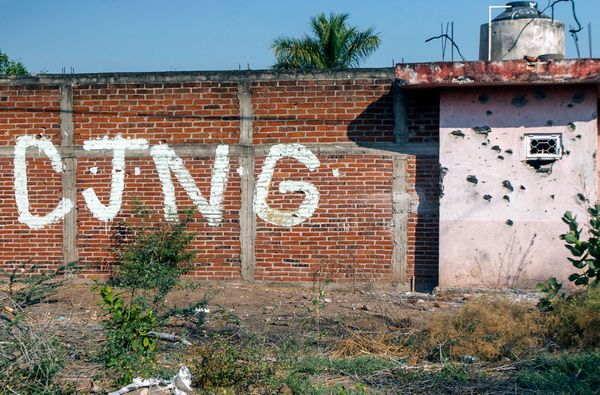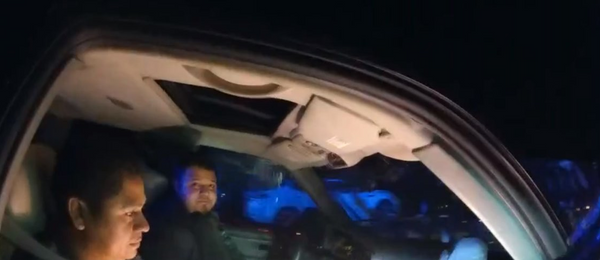
Israel is engaged in a “multi-front war”, its defence minister has said, hinting at military operations across the Middle East as the war in Gaza showed new signs of a dangerous regional escalation.
Speaking in parliament on Tuesday, Yoav Gallant said Israel was “coming under attack from seven theatres: Gaza, Lebanon, Syria, Judea and Samaria [an Israeli term for the West Bank], Iraq, Yemen and Iran”.
“We have already responded and taken action in six of these theatres,” he told the Knesset, without specifying.
Iran-allied militias around the Middle East have attacked Israel and US military installations across the region since Hamas launched its devastating attack on southern Israel on 7 October, killing 1,140 people and taking up to 250 hostage.
Israel’s retaliatory war on the Hamas-controlled Gaza Strip has already become one of the most destructive conflicts of the 21st century, with estimates suggesting more than 20,600 people have been killed, 55,000 injured, and 85% of the Palestinian territory’s 2.3 million people forced to flee their homes.
Fighting in the 41km-by-12km (25 mile-by-7 mile) territory has intensified since a seven-day ceasefire collapsed at the beginning of December. Israeli forces continued to bombard refugee camps in the centre of the strip for a fourth day on Tuesday, in an apparent sign of its promised broadening of the offensive.
A total of 241 people had been killed and 382 injured over the past 24 hours, the health ministry in Gaza said on Tuesday afternoon. The ministry does not differentiate between civilian and combatant casualties, but about 70% of the toll is estimated to be women and children.
Gallant’s comments on Tuesday came as the war in Gaza threatened to spill outside the borders of Israel and the Palestinian territories. Earlier in the day, Egypt said a drone was shot down near the Red Sea resort city of Dahab, the second such occurrence in a month.
The drone’s origin was not immediately clear, but Yemen’s Houthi rebels have disrupted global trade in the Red Sea with attacks on international vessels, and have launched drones and missiles towards Israel.
Late on Tuesday, the Houthis claimed responsibility for a missile attack on a container ship in the Red Sea, and for an attempt to attack Israel with drones. MSC Mediterranean Shipping said there were no injuries to its crew from the attack on its ship, the United VIII, en route from Saudi Arabia to Pakistan. A Houthi military spokesperson, Yahya Sarea, said in a televised address the group had targeted the vessel. He also said the Houthis, which are aligned to Iran, had carried out a military operation targeting Eilat and other areas in Israel. He did not say whether any of the targets were hit.
On Saturday, the US defence department explicitly blamed Iran for the first time since the Gaza conflict broke out for a drone attack targeting a chemical tanker in the Indian Ocean.
Tuesday’s explosions occurred a day after an Israeli airstrike outside the Syrian capital of Damascus killed a senior general in Iran’s Revolutionary Guards. An Iranian statement on national television said Israel would “pay for this crime”.
In Iraq, the US bombed three sites associated with Kata’ib Hezbollah, an Iranian-backed militia it blamed for a drone strike that wounded three American soldiers based in the northern city of Erbil. The airstrikes drew sharp condemnation from the Iraqi government.
And far from the Middle East, in India, there was an explosion near the Israeli embassy in New Delhi, Israel’s foreign ministry said on Tuesday. Indian and Israeli officials are investigating the cause of the blast, in which no one was hurt.
Separately, Israel and the powerful Iran-backed Lebanese group Hezbollah have traded near-daily volleys of missiles, airstrikes and shelling across the frontier since 7 October. About 150 people in Lebanon have been killed, including 17 civilians, and 11 in Israel, including four civilians. Behind the scenes, the US is leading intense negotiations to try to de-escalate the hostilities on the Blue Line that separates the two countries, where the risk of miscalculation setting off a regional war is highest.
Despite increasing international outcry over the humanitarian disaster in Gaza, including growing criticism from Israel’s most important ally, the US, the prime minister, Benjamin Netanyahu, has said Israel would push on until achieving “complete victory” over Hamas. He reiterated during a visit to Israeli troops in Gaza on Monday that the fight “isn’t close to finished”.
“We are not stopping. The war will continue until the end, until we finish it, no less,” he said.
Israel says it does what it can to protect civilians, and blames Hamas for using Gaza’s population as human shields – a charge the group denies.
Israel’s military issued orders on Tuesday afternoon telling residents of central Gaza’s Bureij, Nuseirat and Maghazi refugee camps to leave, despite designating the camps as “evacuation zones” earlier in the war, meaning that the strip’s civilians are being forced to seek shelter in ever-smaller areas.
The UN’s human rights office said in a statement: “We are gravely concerned about the continued bombardment of Middle Gaza by Israeli forces, which has claimed more than 100 Palestinian lives since Christmas Eve.”
Gaza and the West Bank are home to 68 refugee camps, most of which were set up to house Palestinians who fled their homes after the creation of Israel in 1948. Today, they are overcrowded and poverty-stricken, with few services.
Fighting in the northern half of the strip also appears to be fierce, despite assessments from the Israeli army’s chief of staff over the weekend that Israel had near “total operational control” over Gaza City.
Around a quarter of Gaza’s population are starving, the UN’s latest estimate said, while only nine of the territory’s 36 hospitals are functioning. Doctors, overwhelmed with injured people and lacking basic medical supplies, say that in many cases they have been forced to amputate limbs that could have been saved under different circumstances.
While since mid-December there has been an increase in aid reaching Gaza – about 200 trucks a day – aid agencies say this is still a fraction of what is needed for the population to cope with the winter, and is difficult to distribute aid because of the fighting. Before the conflict broke out, about 500 goods and aid trucks entered the territory every day.
Phone and internet lines appeared to have been blocked on Tuesday afternoon, with Gaza’s main telecoms provider, PalTel, announcing another “complete interruption of service”. Such outages are now frequent, especially before big Israeli ground operations.
Hamas cells using improvised explosive devices, ambushes and an extensive tunnel network have inflicted significant losses on the Israel Defense Forces in recent days, bringing the total number of Israeli soldiers killed to 156.
A ceasefire proposal put forward by Egypt, a key mediator between Israel and Hamas, was rejected by both parties on Monday night. Talks mediated by Qatar, which led to a seven-day ceasefire at the end of November and the release of 100 hostages in exchange for 240 Palestinian women and children held in Israeli jails, also appear to have stalled.







